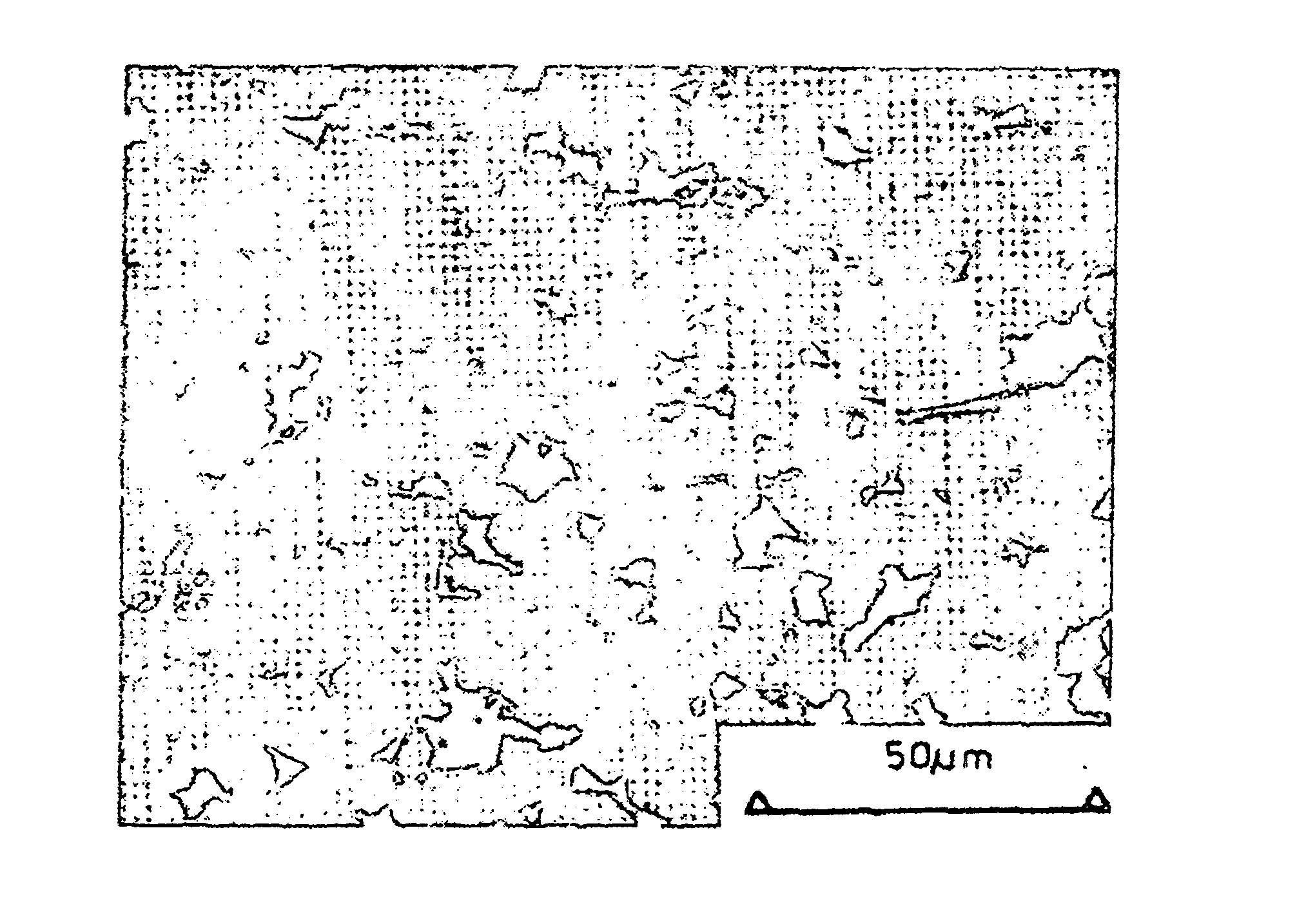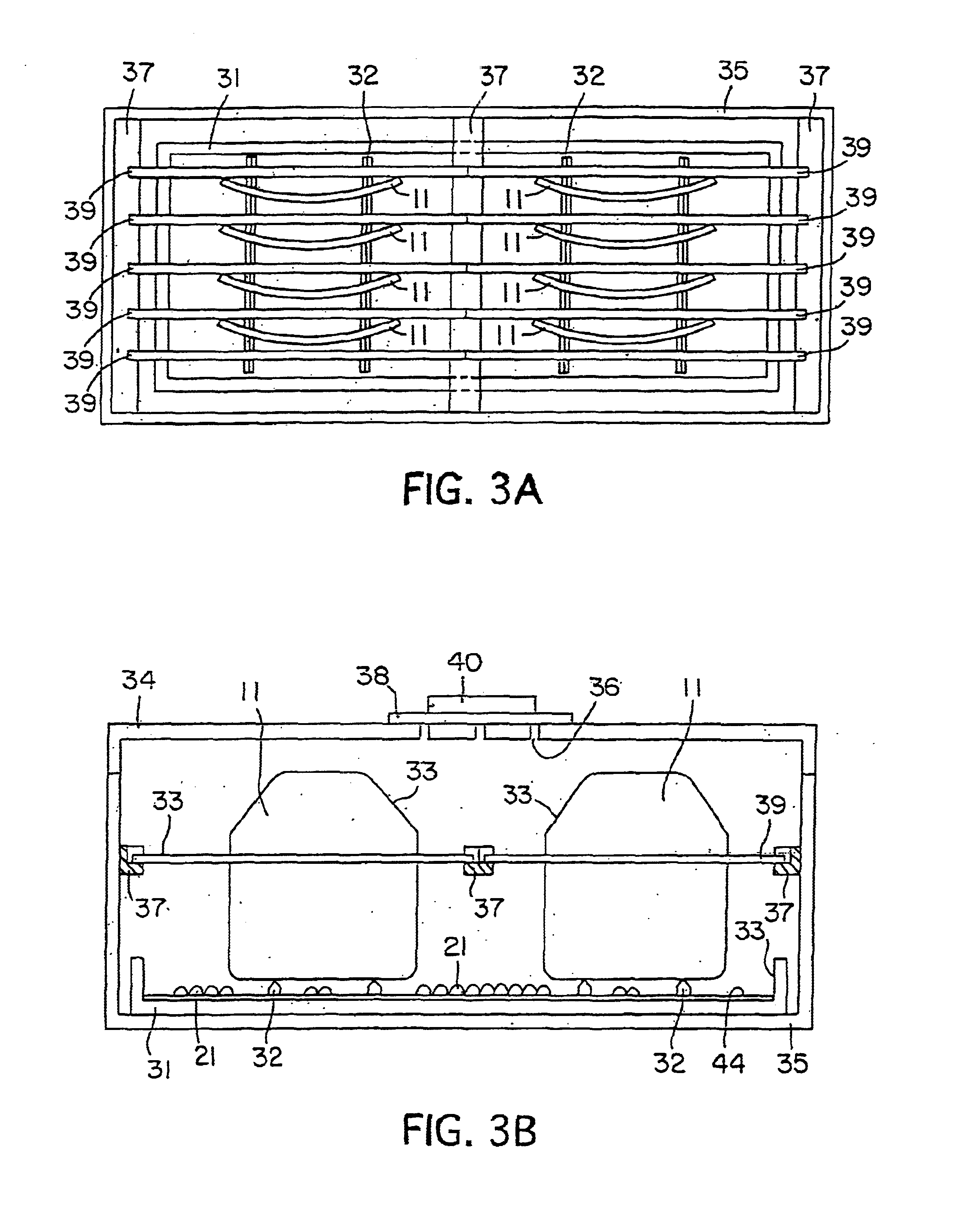Ceramic-rich composite armor, and methods for making same
a composite armor and ceramic technology, applied in the field of ballistic armor structures, can solve the problems of reaction-bonded silicon carbide, high cost of hot pressing and shape limitation, and the ability to resist the attack of armor, and achieve the effect of less expensive processing and minimal dimensional chang
- Summary
- Abstract
- Description
- Claims
- Application Information
AI Technical Summary
Benefits of technology
Problems solved by technology
Method used
Image
Examples
example 1
[0089]This example demonstrates, among other important features of the instant invention, the fabrication of a silicon carbide composite armor plate highly loaded in a fine-grained silicon carbide filler.
[0090]An armor “breastplate” and four “feeder rail” preforms were prepared by a sedimentation casting process. Specifically, about 24 parts of de-ionized water were added to 100 parts of CRYSTOLON green silicon carbide (Saint-Gobain / Norton Industrial Ceramics, Worcester, Mass.) and about 6 parts of KRYSTAR 300 crystalline fructose (A.E. Staley Manufacturing Co., Decatur, Ill.) to make a slurry. The silicon carbide particulate consisted of about 65 parts by weight of Grade F320 (median particle size of about 29 microns, blocky morphology) and the balance Grade 500 RG (median particle size of about 13 microns, rounded morphology). The solids and liquids were added to a plastic jar and roll mixed for about 40 hours. The slurry was de-aired in about 760 mm of vacuum for about 5 minutes....
example 2
[0105]Eight silicon carbide composite armor breastplates were formed in substantially the same manner as in Example 1, with the following exceptions. First, about 22 parts by weight of deionized water was added to about 6 parts of KRYSTAR crystalline fructose (A.E. Staley Mfg. Co.) and about 100 parts of CRYSTOLON green silicon carbide particulate (Saint-Gobain / Norton Industrial Ceramics, Worcester, Mass.). Second, the silicon carbide particulate consisted by weight of about 60 percent Grade F240 (median particle size of about 45 microns, blocky morphology) and the balance Grade 500 RG (median particle size of about 13 microns, rounded morphology).
example 3
[0106]Silicon carbide armor breastplates were produced substantially in accordance with Example 2, with the following notable exceptions. First, the back-soaking of fructose solution into the pyrolyzed breastplate preforms was modified somewhat. More exactly, the aqueous solution was about 80 percent by weight of KRYSTAR® crystalline fructose (A.E. Staley Mfg. Co.), and the breastplate preforms were immersed in this solution for a minimum of about 3 hours at ambient pressure only, i.e., with no application of pressure or vacuum to accelerate the back-soaking. Second, the breastplate preforms were not coated with boron nitride. Third, the breastplate preforms were infiltrated with the length dimension instead of the width dimension of the preform in contact with the feeder rails.
PUM
| Property | Measurement | Unit |
|---|---|---|
| diameter | aaaaa | aaaaa |
| size | aaaaa | aaaaa |
| temperature | aaaaa | aaaaa |
Abstract
Description
Claims
Application Information
 Login to View More
Login to View More - R&D
- Intellectual Property
- Life Sciences
- Materials
- Tech Scout
- Unparalleled Data Quality
- Higher Quality Content
- 60% Fewer Hallucinations
Browse by: Latest US Patents, China's latest patents, Technical Efficacy Thesaurus, Application Domain, Technology Topic, Popular Technical Reports.
© 2025 PatSnap. All rights reserved.Legal|Privacy policy|Modern Slavery Act Transparency Statement|Sitemap|About US| Contact US: help@patsnap.com



